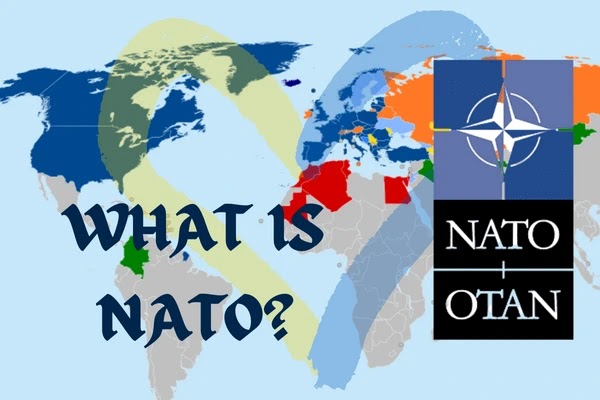What Is NATO?
The term "NATO" is increasingly used in the media worldwide. At the same time, Russia is conducting an attrition war in Ukraine. According to certain analysts, NATO was to blame for the Russian Federation's invasion of Ukraine. Ukraine has been drawn to NATO, which has sparked a conflict between Russia and NATO that is still strong.
What Is NATO?
NATO is an abbreviation for the North Atlantic Treaty Organization (NATO) and the Organisation du traité de l'Atlantique Nord (OTAN) in French. The North Atlantic Treaty established NATO, one of the world's largest military alliances. NATO has a headquarters in Brussels, Belgium, and its member nations are all required to intervene to protect one another as much as feasible in the case of an attack by outside parties. NATO has annexed or established a combined defense system.
Origin of NATO
The United States is a tremendous power, especially in light of the Soviet Union's (now Russia's) expanding communist influence worldwide. NATO was founded at the initiative of liberal forces, Canada, and ten other European nations. of the most significant military coalitions in the world. On April 4, 1949, the United States, Belgium, Canada, Denmark, France, Iceland, Italy, Luxembourg, the Netherlands, Norway, Portugal, and the United Kingdom became the organization's initial 12 members.
The United Kingdom, the United States, Albania, Belgium, Bulgaria, Canada, Croatia, the Czech Republic, Denmark, Estonia, France, Germany, Greece, Hungary, Iceland, Italy, Latvia, Lithuania, Luxembourg, and Montenegro are the current members of NATO, which currently has 30 members. By 2020, Northern Macedonia, Poland, Portugal, Romania, Slovakia, Slovenia, and Spain.
How NATO Behaves?
Each Member State must be represented on the NATO Council by an Ambassador or Permanent Representative who will be accompanied by a national delegation of advisors and representatives from the various NATO committees where each Member State is represented. The Secretary-General of NATO oversees the consultation and decision-making processes within the alliance and ensures that decisions are carried out. They are the alliance's highest international civil servant. The Secretary-General serves as the Organization's Chief of International Staff and NATO's Chief Spokesperson. Jane Stoltenberg is the current Secretary-General of NATO. The headquarters personnel comprises officers, officers, and civilians or diplomats from national delegations of member nations. with associate nations.
The heads of state and government, or the ministers of foreign affairs and defense, convene the NATO Council periodically. Every day, member nations address security concerns at all levels and in many contexts based on decisions reached by all the members. All conclusions, which were acquired by consensus among the 30 nations, shall be carried out. Every day, civilian and military officials and experts congregate at the NATO headquarters to share information and reach a consensus. At the NATO headquarters with a national delegation and staff. In operations and crisis management missions, particularly emergency operations, NATO plays a crucial role. The Washington Treaty's Article 5 authorizes specific actions.
What Is NATO's Purpose?
NATO seeks to preserve regional security and stability while defending the freedom of its members. NATO also aims to uphold the rule of law, democracy, individual liberty, and human rights as the foundation for durable peace in Europe. Law and order.
The goal of NATO is to protect freedom and security between Europe and North America. Permit discussion and collaboration among member nations on defense and security issues and joint operation execution. Addressing international crises. The three primary responsibilities of this military alliance are:
- cooperative defense,
- crisis management for member security, and
- sharing weaponry to increase its members' military might.
How Do Countries Become a NATO Member?
According to the NATO membership policy, prospective members must fulfill several requirements, including:
1. The nation in question must uphold democracy.
2. The nation in question must transition to capitalism or a free market economy.
3. There shall be no commander or leader in charge of the armed forces of the affected countries.
4. Relevant nations must respect their neighbors' sovereignty and have positive relations with them.
5. NATO armed forces must be able to cooperate with new member states.
6. A participating nation cannot join NATO if any member state does not support it.


